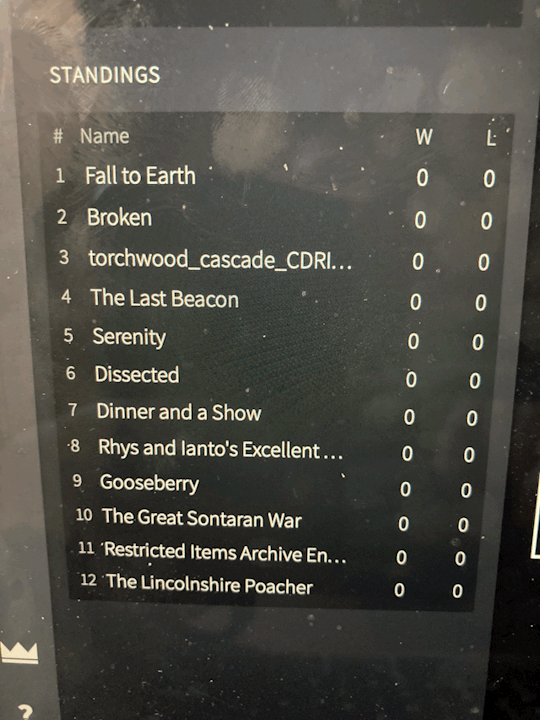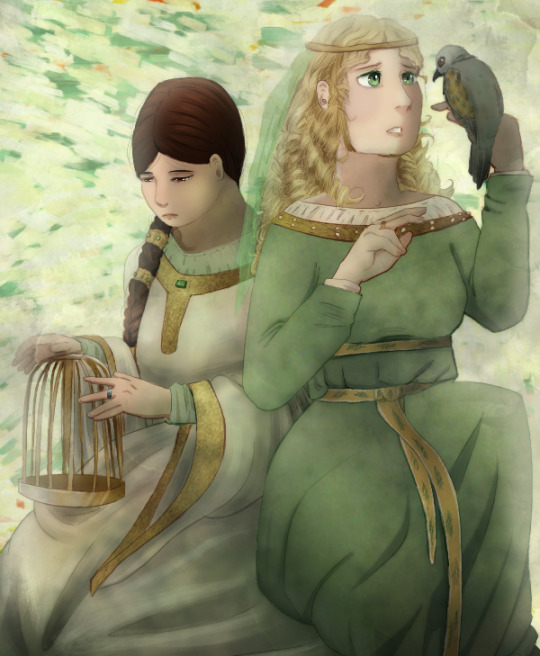#Lincolnshire show
Explore tagged Tumblr posts
Text
instagram
Family day out
instagram
#Lincolnshire showground#Lincolnshire show#rural#bryonyperfectlyimperfect#lincsshow#lincsshow23#home schooling ideas#parents in the picture#kids crafts 101#farm animal#home learning#educational field trip#uk places#places to visit uk#outdoor kids activities#tractors#my countrysidetonic#Lincolnshire life#Lincolnshire uk#rural area#field#Lincolnshire blogger#family activities#day out uk#farming#agriculture#farming uk#lincolnshire#family time#uk blog
0 notes
Text

[ID: A digitally illustrated two panel comic of Martin Blackwood and Jonathan Sims from The Magnus Archives. In the first panel Martin is stood at a counter preparing a cup of tea. He is smiling softly with his eyes closed and a thought bubble next to his head shows a small image of Jon with some hearts around him and text reading "ah... Jon...". The second panel shows Jon sat at his desk with the mug of tea from the first panel in his right hand and papers in his left. He is growing and saying "Martin's such a fucking idiot I hope he dies". End description.]
Stupid season 1 jonmartin dynamic ily forever
#listening to jon talk in season 1 after having just listened to s4+5 is hysterical. 'good lord man!' girl you don't actually talk like that#the rp accent is truly so aggressive and as someone who used to talk like that (rip my original accent that will never return)#it's a dark mirror to what i must have sounded like#jonathan sims#martin blackwood#jonmartin#tma fanart#the magnus archives#wait i wanna clarify i didn't do the rp accent by my own volition that was enforced on me by my mum who said i 'spoke like a peasant'#i started speaking like that at around 13 and dropped it at around 15 i think#now my accent is unidentifiable but has a tint of american because of too much time spent watching american shows#but it was originally a lincolnshire accent#sorry for the maddy accent lore in the tags i'm gonna go now
961 notes
·
View notes
Text












And here are our finalists!

The finals will consist of 66 polls to be released over a length of time to be decided by this poll starting on August 16th (to give me time to actually make all the polls lmao). Each finalist will go up against each other and whichever audio wins the most matches and points will be crowned the ultimate Torchwood monthly! May the best monthly win!
#torchwood#big finish#fall to earth#broken#torchwood cascade cdript.tor#the last beacon#serenity#dissected#dinner and a show#rhys and ianto’s excellent barbecue#gooseberry#the great sontaran war#restricted items archive entries 031 049#the lincolnshire poacher
27 notes
·
View notes
Text
The anti seasick ship SS Bessemer Saloon Steamship
The SS Bessemer Saloon Steamship- SS Bessemer for short - was an experimental Victorian passenger side wheel steamer designed to counteract seasickness and operated between Dover and Calais. Her inventor was Sir Henry Bessemer.

Bessemer Saloon Steamer, 1874
In 1868, Bessemer, who suffered from severe seasickness, developed the idea of a ship whose passenger cabin - the saloon - was to be suspended on a gimbal and mechanically held horizontally, thus levelling out the swell and sparing the occupants from the ship's movements. Sounded too good to be true, but more on that later. He patented this ingenious idea in December 1869 and after successful trials with a model in which the levelling was carried out by hydraulics controlled by a helmsman observing a spirit level, Bessemer founded a limited company, the Bessemer Saloon Steamboat Company Limited, which was to operate steamships between England and France. Capital of 250,000 pounds was used to finance the construction of a ship, the SS Bessemer, whose chief designer was the naval architect Edward James Reed.

SS Bessemer, by Henry Spernon Tozer 1874
And so she was built by Earle's Shipbuilding in Hull. She bore the shipyard number 197 and was launched on 24 September 1874. As already mentioned, she was a paddle steamer with four buckets (two buckets each on port and starboard, one forward and one aft). She had a length of 106.68 m (350 feet), a width on deck of 12.19 m (40 feet), an outside width over the bucket boxes of 19.81 m (65 feet), a draught of 2.26 m (7 feet 5 inches) and a gross register tonnage of 1974 tonnes. What also characterised her was that she was completely identical fore and aft, she had two bridges and two wheels, which simply made her faster and more manoeuvrable in both directions. Her maximum speed was about 17.4 knots.
The inner saloon was a room 70 feet long (21 metres) and 30 feet wide (9.1 metres), with a ceiling 6.1 metres above the floor, Moroccan-covered seats, partitions and spiral columns of carved oak and gilded panels with hand-painted murals. The press liked to call it the floating clubhouse. However, the swinging saloon was only intended for first class passengers. The second class, on the other hand, did not enjoy this and had to make do with cabins on the sides of the hull.

Harper's Weekly Interior Pages showing the newly building ultra Luxury Bessemer Channel Steam-Ship, 1874
The disaster begins
On 21 October 1874, the Bessemer had her first misfortune. She had just arrived in Hull to be fitted out when she was driven ashore in a storm. She was refloated and found to be undamaged, which was not entirely true, as would later become apparent.
In March 1875, the ship sailed on a private trial voyage from Dover to Calais. During this voyage she is said to have steered well and even had a top speed of 18 knots. Her swinging saloon is also said to have worked excellently. However, things didn't go so smoothly because on arrival in Calais, a paddle wheel was damaged when she crashed into the pier because it didn't react to the rudder at slow speed.
The first and only public voyage took place on 8 May 1875, with the ship sailing with her revolving cabin locked (some observers suggested this was due to the ship's severe instability, but Bessemer attributed this to lack of time to repair the previous damage). The ship was operated by the London, Chatham and Dover Railway. After two attempts to enter the harbour, it again crashed into the Calais pier, this time destroying part of it. Calais billed the company £2800 for the damage.

The Bessemer Saloon-Ship running foul of Calais Pier. Illustrated London News, 1875
Due to the poor performance, investors lost confidence and the company was dissolved in 1876. On 29 December 1876, the Bessemer ran aground on Burcom Sand in the Humber upstream of Grimsby, Lincolnshire, after the removal of the swivelling saloon and other extensive alterations. She was refloated and taken to Hull. The Board of Trade's investigation into the grounding found that the captain was at fault. His certificate was suspended for three months.After removal, the designer Reed had the saloon cabin taken to his home, Hextable House, Swanley, where it was used as a billiard room. When the house was later converted into a women's college, Swanley Horticultural College, the saloon was used as a lecture theatre, but was destroyed by a direct hit when the college was bombed during the Second World War.

The Saloon as a lecutre theatre
The ship was then docked in Dover until it was sold for scrapping in 1879.
The Theory of the Top. Volume IV, by Felix Klein, Arnold Sommerfeld, London, 2010
The Nautical Magazine for 1874
Sir Henry Bessemer, F.R.S.: An Autobiography, 1905
The Gale, The Times. No. 28140. London. 23 October 1874. col E, p. 8.
London, Chatham & Dover Railway Company
177 notes
·
View notes
Text
Everything but prudent

“This whole place belongs in a skip,” Marianne said darkly, pausing the scrub-brush she held clutched in her hand, the flagstones around her very slightly cleaner than when she had started, though it was hard to tell as there was a vast quantity of grey scummy water turning the stones dark, soaking Marianne’s jeans and trainers. The scarlet scarf she’d used to tie her bright chestnut hair back was still pristine as was her lip-gloss and Elinor made a great effort not to roll her eyes at the melodramatic scene Marianne had arranged for herself. All it needed was goldfinch to come through the open window and perch on Marianne’s shoulder, trilling a merry little melody. Marianne had refused the mop Elinor had suggested and Elinor was resigned to having to give the floor another going-over when Marianne decided it was clean enough.
“We’re lucky to have a place to stay,” Elinor reminded her.
Lucky was an understatement. Elinor had started researching how much she could make selling her eggs, well before they’d come to Barton Cottage Inn where she could keep Lincolnshire Buffs to do the laying, and then, in what still felt like a miracle, their mum’s third cousin twice removed or whatever he was Jock Middleton, a successful hotelier who seemed equally fond of unprepossessing commercial properties and widowed distant relatives with dramatic daughters, had asked their mother whether she and her girls would be willing to make a go of the inn he’d bought at an auction nearly a decade ago and had forgotten about. Once they’d confirmed the inn had an intact roof to keep out the weather and at least one indoor lav, Elinor and her mother had leapt at the chance Jock offered, while Marianne took to melancholic swanning about their flat and making interminable cups of tea she never finished.
“You mean a place to work our fingers to the bone. To moulder away,” Marianne muttered. Elinor reminded herself Marianne was young and it was a wrench to have to give up on her plans to travel, the music course intensive she’d won a scholarship for which unfortunately only covered tuition, not living expenses in Vienna.
Elinor ignored the fact that she herself was only two years Marianne’s senior, had been forced to leave her highly-sought-after but poorly paid internship, and had been effectively abandoned by Teddy, who had stopped answering her calls without any explanation. She ignored it a little, anyway.
“I told you to wear rubber gloves,” Elinor said. “And the mouldering will get better once we have someone in to look at the electric—”
“Who’d come here, Ellie?” Marianne interrupted.
“Cousin Jock is footing the bill for the big repairs, I expect we’ll be able to get a service in shortly, and honestly, Marianne, you ought to hope lots of people want to come here and stay at the inn, otherwise even Jock’s generosity may run out and we’ll be out on our arses,” Elinor said.
“Elinor said arses, Elinor said arses,” Megan, their youngest sister, the one her mother had announced, after too much pinot grigio, had been an accident, but such a happy one, though your father did hope for a boy. Megan was a whirlwind, a cannonball, far too bright for her grammar school, impossible to homeschool, and exceptionally fine at distracting Elinor and Marianne from any real dispute.
“You’re tracking in God knows what, Megan—” Marianne exclaimed. Now she cared about the floor.
“Language, dear,” their mother said, having come in through the second set of stairs, the servants’ stairs, Elinor supposed, ones she and her sisters ought to get used to using. It was hard to consider wearing uniforms, but maybe Marianne would enjoy finding some signature print fabric they could make into scarves and throw pillows, something cottage-y, English country garden. Something that would not show the stains Megan was sure to immediately get on any article of clothing.
“But she said arses,” Megan replied.
“Elinor is an adult and if she felt she needed to use a vulgar word, I imagine she had her reasons. Elinor, I did call that company but it went straight to the machine, so I called Jock—”
“Mum, you should have waited, he won’t want to be bothered,” Elinor said. Some days, most days, it seemed she was the only Dashwood who didn’t think Barton Cottage Inn was a kind of free pass. Megan was the only one who had a right to feel that way.
“He wasn’t bothered a bit, you worry too much, darling,” her mother replied.
“Someone has to,” Elinor said under her breath.
“He said he had a friend to send round, a sort of jack-of-all-trades, a bit at loose ends, he said, it would be good for him to have a project to work on, and heaven knows the inn qualifies,” her mother went on blithely.
“Jock-of-all-trades has a friend Jack-of-all-trades,” Megan said, grinning.
“Actually, his name is Brandon,” her mother said.
“Jock has a friend named Brandon?” Marianne said. “That’s rather trendy, isn’t it?”
“His last name is Brandon. His first name is Richard.”
“That’s not trendy at all,” Megan said. “I’m going to call him Brandon.”
“You’re going to call him Mr. Brandon or sir,” her mother said firmly.
If he could deal with the old wiring and the wonky cistern, the crumbling masonry and the flaking plaster, if he could reach a détente with the boiler, which appeared to be possessed and not by a happy spirit, Elinor would call the man whatever he pleased, prince or saint or colonel.
As it turned out, he was a dab hand with a fuse and a gasket and he said he preferred Brandon.
If it were not for Elinor’s stupidly loyal heart, the memory of Teddy’s voice reciting Keats in the twilight, she’d have fallen in love at first sight.
She’d discover soon enough that Brandon did that as well.
It took Marianne substantially longer.
Posted for Janeuary 2025 @janeuary-month Day 5, prompt: inn

#janeuary 2025#sense and sensibility#modern au#inn#marianne dashwood#elinor dashwood#giving Colonel Brandon the first name Richard#in honor of Alan Rickman#sisters#some angst#humor
56 notes
·
View notes
Text

I’ll keep the king when you are gone away. I’ll keep him safe from the dark things that wait. — King by The Amazing Devil
INPRNT | COMMISSION INFOS
-
Some details for archaeology nerds (Here we go again AHAHAHA)
First of all the costume Alfred wears in this pic is BY NO MEANS historical accurate, but if we really want to be 100% accurate then to my knowledge there’s a high chance that Alfred wouldn’t be wearing dresses gowns at all (whoever decided to make Alfred wear those pretty cough dresses cough in the show I wish your family to prosper for all eternity YOU’RE A HERO), so instead I just chose to design whatever clothes I want and add some Anglo-Saxon elements in it :)
1. Alfred’s earrings
Took inspiration from the 7th century Anglo-Saxon/Frankish crystal ball, now in Ashmolean Museum, Oxford. Here’s the thing, I know English men (and the monarchs) don’t wear earrings until the 16th century and earrings weren’t even popular during the Anglo-Saxon period, but once I saw Charles I wearing pearl earrings in his portrait I just can’t help but put something pretty on Alfred’s ears as well lol…Sadly I can’t find the exact size of this one but the official site says that it was used as a pendant/an amulet! Probably for pagan practices though, but it’s pretty, isn’t it? :D


2. Patterns on Alfred’s gown
Taken from the patterns on the Bewcastle Cross in Cumbria (which used to belong to Northumbria, built in around the 7th to early 8th century, aka the period Bede lived in.


3. The woven band
The pattern is taken from the Laceby band found in Laceby, Lincolnshire, dated to early 7th century. It seems both Scandinavians and Anglo-Saxons enjoy wearing tablet-woven bands? Saw this kind of things a lot in viking clothes reconstruction as well.


4. …Whatever this is
From fol. 34r in Book of Kells, the famous Celtic gospel book completed in Ireland circa 800 AD. As you can see I got lazy during drawing this lol but the illustrations in the original manuscripts are really impressive!


Now I don’t know if this is a good news or not but I’ve still got like…six wips for alhtred in hand…Good god of arts DELIVER ME
#posting it before i start wanting to kill myself#this was supposed to be a doodle but in the end i spent 30 hours on it and it still looks like shit#urghhhh#sometimes i hate doing arts lol#ok sorry for artist’s rants#SO about the drawing itself#this is completely a self indulgent piece LOL#at the end of the day i just want to make alfred wear pretty things :3#and see him being bridal carried#that’s all lol#BTW can we just ignore for a second how strong uhtred would need to be in order to carry alfred like that by one single hand#we call it ✨creative freedom✨#p.s. I’m thinking the when ‘you’ are gone away quote is Uhtred referring to the christian god lol#the last kingdom#tlk alfred#alfred x uhtred#uhtred x alfred#king alfred#alfred the great#alhtred#uhtred#hikaruchen#hikaru tlk
142 notes
·
View notes
Text
sometimes folklore collectors and scholars get kind of... snarky, is a good way to put it, when a particular tale gets repeated in more than one place. Or they act as if the fact this tale has been copied makes it somehow less "real", and get hung up on trying to ascertain which is the oldest and therefore "truest" version of that tale. There's this story I adore about a well-meaning brownie who wanted to help a farmer herd his sheep, but got confused and herded in a hare as well. This story has been collected from the Isle of Man, and has also been collected from (I think – don't have the books to hand) Lincolnshire and Sussex. The first time I read it, the recorder had a very "it's probably stolen from another place though which just shows that this county doesn't come up with its own folklore" attitude. which made me very sad.
Like.... people love stories. we love making stuff up for all sorts of reasons. Sometimes these reasons are "they genuinely thought it was magic" and sometimes it's "this is a good way of keeping children away from dangerous bodies of water". and other times it's pure imagination. For some people studying folklore though, this notion seems very uncomfortable because they want to think of folklore as a sort of. magical and quaint set of beliefs attached to a specific image of the past, or to a specific (often idealised) place. But I don't think the idea that maybe someone heard a story and decided to lie and say it happened to someone they knew nearby instead, or totally invented said story, makes it any less folklore. Actually I'd say that's deeply true to the "folk" part of folklore.
Also I just get really happy when I see certain tales I recognise pop up again from other sources. that is my dear friend <3
24 notes
·
View notes
Photo

Henry IV of England
Henry IV of England ruled as king from 1399 to 1413 CE. Known as Henry Bolingbroke, Duke of Lancaster before he became king, Henry clashed with his cousin Richard II of England (r. 1377-1399 CE) and was exiled in 1397 CE. Returning to England with a small army in the summer of 1399 CE, Henry made himself king as Richard's support collapsed. Kicking off his reign with the murder of his predecessor, Henry would face major rebellions in both England and Wales, and he frequently clashed with Parliament, particularly the 'Long Parliament' of 1406 CE. Henry was the first of the kings from the House of Lancaster and he was succeeded by his son Henry V of England (r. 1413-1422 CE).
Birth & Family
Henry was born in April 1366 CE at Bolingbroke Castle in Lincolnshire, the son of John of Gaunt (l. 1340-1399 CE), himself the son of Edward III of England (r. 1327-1377 CE) and so a claimant for the throne of Richard II (who was the grandson of Edward III and the son of Edward the Black Prince, l. 1330-1376 CE). John was a powerful but unpopular figure who had been passed over for the throne because he had supported corrupt nobles and officials identified by Parliament. Henry Bolingbroke's mother was Blanche of Lancaster, daughter of the Duke of Lancaster. The young nobleman was given the title Earl of Derby, the first of many he would acquire over his career.
Henry married Mary of Bohun (b. c. 1369 CE) on 5 February 1381 CE, but she died during childbirth in 1394 CE. The couple's most famous son was Henry, future Henry V, born on 16 September 1387 CE. Henry, now king, married again on 7 February 1403 CE, this time to Joan of Navarre (l. c. 1370-1437 CE). Henry had a typical noble upbringing where he showed a flair for the medieval tournament, courage, piety, and an interest in literature. The young Henry had his share of adventure when he twice went to fight pagans in Lithuania as part of the long-running Northern Crusades (12-15th century CE) alongside Teutonic Knights. There would also be a pilgrimage to Jerusalem before he concentrated on his ambitions in England.
Continue reading...
19 notes
·
View notes
Text

Dame Joan Plowright
Stage and screen star who was part of a radical generation of actors responsible for establishing the National Theatre
Joan Plowright, who has died aged 95, played a central role in the historic overhaul of British theatre at the Royal Court in the late 1950s. A founder member of George Devine’s English Stage Company in 1956, she made her name as Beatie Bryant, the working-class heroine in Arnold Wesker’s Roots in 1959, and married Laurence Olivier in 1961. The union of Plowright and Olivier was symbolic of the new theatre order embracing the old glamour, as the greatest actor of the day threw in his lot with the younger generation.
Olivier had scored one of his biggest successes as Archie Rice, the dying music hall star, in John Osborne’s The Entertainer at the Court in 1957. When the play transferred to the West End and Broadway, Plowright took over from��Dorothy Tutin as Jean Rice, Archie’s daughter, and their friendship ripened into an unshakeable intimacy, and marriage, that lasted until Olivier’s death in 1989.
Plowright embodied the qualities of common sense, honesty and a sort of earthy vitality that characterised her acting. She had deep brown, currant-bun eyes in a face of plump beauty and openness. Olivier always admired the self-deprecating quality in her performances, and encouraged her to develop this as a comic weapon in her armoury. As she revealed in an affecting autobiography, And That’s Not All (2001), she worried about being employed at the National Theatre as the wife of the boss when Olivier launched that institution first at Chichester in 1962 and then at the Old Vic. But her early performances, as Sonya in what many believe to be the greatest Uncle Vanya ever seen on the British stage (Michael Redgrave in the title role, Olivier as Astrov, Sybil Thorndike as the old nurse), and as George Bernard Shaw’s Saint Joan, put paid to suspicions of nepotism.
She had an intense and fiery quality, and a wonderfully melodious speaking voice that was a constant, grounded musical counterpoint to the brilliant skitterings of the NT’s star turns, Maggie Smith and Geraldine McEwan. In later years, she acquired a comforting matronliness in her film performances, though a quality of rare decency always shone through, as in her supporting role as a suspected witch in Roland Joffé’s version of The Scarlet Letter (1995) or as a trusted confidante in Franco Zeffirelli’s Callas Forever (2002).
Plowright’s father, William, was a journalist and newspaper editor from Worksop in Nottinghamshire, and her mother, Daisy (nee Burton), an enthusiastic actor from Kent. Joan, born in Brigg, Lincolnshire, was the middle of three children; her younger brother, David Plowright, became a senior executive at Granada Television and was closely involved in much of Olivier’s later television work, including Brideshead Revisited and his final King Lear.
From 1931 the family lived in Scunthorpe, where Joan attended the grammar school before joining the Laban Art of Movement Studio in Manchester and the Old Vic Theatre School in London. At the latter (from 1949) she studied with Glen Byam Shaw, Michel Saint-Denis and Devine, and this period was crucial to her development as a prominent artist in the postwar theatre, as new British writing and the European theatre of Brecht, Ionesco and Beckett fuelled an upsurge of brilliant acting among a new generation, many of them from the provinces. This crew articulated the changing face of modern society, and Plowright was in the vanguard, alongside Albert Finney, Alan Bates, Eileen Atkins, Billie Whitelaw and Robert Stephens.
Before joining Devine at the Royal Court, she appeared in Orson Welles’s bare stage, kaleidoscopic production of Moby Dick at the Duke of York’s in 1955, a show described by Kenneth Tynan as “a sustained assault on the senses which dwarfs anything London has seen since, perhaps, the Great Fire”. As Pip the cabin boy, she was the only girl in a cast that included Patrick McGoohan, Kenneth Williams, Gordon Jackson and Welles himself as Captain Ahab.
The impact of Roots at the Court, in John Dexter’s famously incisive, unsentimental production, was nearly as great as Osborne’s Look Back in Anger had been three years earlier. Beatie was in some ways a feminine, rustic counterpart (the play was set in Norfolk) to Osborne’s metropolitan antihero, Jimmy Porter, but she was also a young woman finding her voice. At the end of a blazing tirade lambasting her own family for their ignorance and conservatism, Plowright’s Beatie cried out, said Tynan, with the wonder that is cognate with one’s first sense of identity – “I’m beginning. I’m beginning!”
You could argue that no subsequent performance was ever so stirring, or ever so influential. But at the National she made a great impact even when she shared a role, Hilde Wangel, with Smith, in The Master Builder, and then as Masha in Three Sisters and Rosaline in Love’s Labour’s Lost.
Her finest NT performances following the opening season were as Portia in Jonathan Miller’s brilliant 19th-century production in 1970 of The Merchant of Venice and, in the following year, opposite a candescent Anthony Hopkins, in John Dexter’s stark and scrupulous revival of Thomas Heywood’s A Woman Killed With Kindness. In the first, she gave full rein to her capacity for wit, irony and a scathing sense of justice; in the second, she boiled with fallibility and indignation as the unfaithful Anne Frankford.
When Olivier gave way to Peter Hall at the National, she sidestepped with some dignity all rumours that she might have wanted to succeed her husband, and her memoirs give a lucid account of the jostling that took place between the factions. She worked with her “beloved” Zeffirelli for the first time on the smash hit Saturday Sunday Monday by Eduardo de Filippo at the Old Vic in 1974 (transferring to the Queen’s theatre) and repeated her success with the same author’s equally popular Filumena at the Lyric in 1977.
In between those hits, in 1974, she joined Lindsay Anderson’s newly formed West End company to play Arkadina in The Seagull and the sexually awakened Alma in Ben Travers’s jaunty but tiresomely scatological The Bed Before Yesterday. There followed modest successes as Nurse Edith Cavell at Chichester in 1982 and an imposing Ranevskaya in The Cherry Orchard at the Haymarket in 1983, with an all-star cast but, alas, an unfinished set on a disastrous opening night. Plowright recalled how the abandoned old retainer Firs (played by Bernard Miles) wailed disconsolately that everyone had left and locked him in while rattling the handle of a door that swung invitingly open and rendered the last moments of the play quite meaningless.
By now she was happily reconciled to the older roles, joyfully seizing on Lady Wishfort, “the old peeled wall”, in The Way of the World (Chichester, 1984), with Smith as a definitive Millamant, directed by William Gaskill. In Núria Espert’s glorious 1986 production of Lorca’s House of Bernarda Alba at the Lyric Hammersmith, as a sleeve-rolling old maid, Plowright suggested “a lifetime of drudgery in the folding of linen”, said Michael Billington. Both shows sailed triumphantly into the West End.
After Olivier’s death, she gathered her family around her in a sombre revival of JB Priestley’s Time and the Conways at the Old Vic in 1990. Both daughters, Tamsin and Julie-Kate, were in the cast, as well as her son-in-law, Simon Dutton, and her son, Richard, directed. Her last notable West End appearance was a great one as the fraught mother-in-law, Signora Frola, in Zeffirelli’s sleek 2003 revival of Pirandello’s Absolutely! (Perhaps) at Wyndhams, with a new text by Martin Sherman.
She worked mostly in films, however, from 1990, gracing two charming Italian idylls: Mike Newell’s Enchanted April (1991) and Zeffirelli’s Tea With Mussolini (1999). The latter was based on the director’s own memories of wartime, scripted by John Mortimer, and co-starred her old friends Smith and Judi Dench as well as Cher and Lily Tomlin – a regular galère of delightfully entertaining eccentrics.
Before she announced her retirement from acting in 2014, due to her failing eyesight from macular degeneration, she made several more films including Mrs Palfrey at the Claremont (2005), in which she embarks on an unlikely friendship with a young writer played by Rupert Friend, the animated movie Curious George (2006) and Anthony Hickox’s spooky horror thriller Knife Edge (2009).
She celebrated her retirement in a series of onstage anecdotal conversations in 2014 with the director Richard Digby Day – “Acting is an outlet for comedy and grief, and all the characters inside you,” she said; and, now almost totally blind, invited three fellow dames, and good friends – Dench, Smith and Atkins – to join her in an overlapping, chatty reminiscence filmed by Roger Michell for the BBC in the garden of the West Sussex home she had shared with Olivier and her young family. Feisty and funny, Nothing Like a Dame (2018) was a surprise delight.
She was made CBE in 1970 and a dame in 2004 and was particularly pleased to receive an honorary degree from Hull University, conferred in a ceremony in Lincoln Cathedral, which she had often visited as a girl.
Her first marriage, in 1953, to the actor Roger Gage, ended in divorce. She is survived by her children from her second marriage, Richard, Tamsin and Julie-Kate, four grandchildren, Troy, Wilf, Ali and Kaya, and a great-grandchild, Sophia.
🔔 Joan Ann Plowright, actor, born 28 October 1929; died 16 January 2025
Daily inspiration. Discover more photos at Just for Books…?
17 notes
·
View notes
Text

Robert the Bruce was born in Turnberry Castle, Ayrshire on 11th July 1274.
Well where do we start with this one? I think the majority of us know about Robert and how he led us to victory at Bannockburn so I will put a bit background together of his immediate family.
His mother Marjorie, Countess of Carrick, I think nowadays the term we would use, and it's quite appropriate , is battle-axe. According to what has been written about her she held his father, Robert de Brus, 6th Lord of Annandaleprisoner until he agreed to marry her, it was through his mother that he drew most of his Scottish ancestry. The marriage must have worked for as well as Robert they had 7 more children.
After the Battle of Methven his wee brother Nigel de Brus was captured at Kildrummy Castle and was taken to Berwick to be hanged, drawn and beheaded for high treason, he was protecting Robert's wife, Elizabeth, his daughter Marjorie, his sisters Christina and Mary Bruce, and Isabella MacDuff, Countess of Buchan and helped them escape, although they were later captured by Balliol's army and handed over to Edward I. Nigel was executed for high treason by being hanged, drawn, and quartered in September 1306 at Berwick-upon-Tweed by the English. Two of his other brothers, Alexander and Thomas were also judicially murdered at Carlisle on Februaey 17th 1307 after being captured at Loch Ryan Galloway in 1207, after landing an invasion force consisting of eighteen galleys trying to take land from Dungal MacDouall, who was a supporter of the Comyns,.
Arguably the most famous of his siblings was Edward Bruce, if you have been paying attention you will remember his part in fighting with Robert at Bannockburn, he later went and fought in Ireland and indeed became King for a short time but lost his life in the Battle of Faughart, the, it's said the victor John de Bermingham then took his head to England to be put on display before Edward II.
Robert's sisters, Christina and Mary, as I said earlier were captured after the siege at Kildrummy, along with Isabella MacDuff, now Isabella crowned the Bruce at Scone, it was tradition that the MacDuffs performed the crowning of Scottish monarchs, Isabella arrived the day after Robert had been crowned but the Bruce agreed to second crowning as otherwise some would see the ceremony as irregular, not being performed by a MacDuff.Isabella was imprisoned in cages for four years of Isabella, Edward Longshanks is said to have commanded "Let her be closely confined in an abode of stone and iron made in the shape of a cross, and let her be hung up out of doors in the open air at Berwick, that both in life and after her death, she may be a spectacle and eternal reproach to travellers."
The sisters faired a wee bit better, Isabel Bruce became Queen of Norway as the wife of King Eric II., so escaped the First War of Scottish Independence. Christina and Mary, also captured after Kildrummy, were sent into solitary confinement at a Gilbertine nunnery at Sixhills in Lincolnshire. Mary Bruce was given the same treatment as Isabella MacDuff, but held at Roxburgh Castle.. The sisters sspent eight years as English prisoners, and returned to Scotland in October 1314 as part of the ransom for the Humphrey de Bohun, Earl of Hereford, who was taken prisoner after the Battle of Bannockburn.
There is not a great deal of detail about the other sisters, Margaret married one Sir William de Cairlyle. Lady Elizabeth Bruce married Sir William Dishington of Ardross, in Fife, and finally Matilda, (Maud) Bruce married Hugh 4th Earl of Ross.
Robert was married twice in his life, first to Isabella of Mar, who died in 1296, , with whom he had a daughter Marjorie, from whom the Stewart dynasty was to trace its lineage. His second wife was Elizabeth de Burgh, with whom he had five children – Margaret, Matilda, David, John (who died in infancy) and Elizabeth. His eldest son succeeded his father as King David II of Scotland.
The photo shows Isabella MacDuff and King Robert I in “The Crowning of Bruce” part of an exhibition at Edinburgh Castle.
31 notes
·
View notes
Text

Conan's victory greatly strengthened Raoul's position. And so, Jean de Dol, dying in 1162, entrusted him with guardianship of his only daughter and his land. What did Henry II do at this juncture? He took possession of the land and of the girl. Persuasion not sufficing, he mobilized an army of Breton and Norman soldiers. This hustle and bustle sufficed; Dol and Combour were delivered to him. As for Iseult de Dol, he married her to a gentleman from Avranchin, his faithful subject Hasculf de Soligné (modern-day Subligni). -B. A. Pocquet du Haut-Jussé, Les Plantagenets et la Bretagne
There is another possible, and extremely powerful, connection between Ranulf, Llywelyn and the kings of England: Ranulf’s second marriage to Clémence de Fougères was a significantly powerful move, where the political benefits to Ranulf were potentially great within Brittany and Lincolnshire. But was Clémence also Princess Joan’s mother? This has not been a possibility considered beyond oblique reference to date, where, according to one unreferenced secondary source, plans for Ranulf’s marriage to Clémence "were nearly scuppered by the King when rumours began to circulate that (King) John himself was showing an inappropriate personal interest in Clémence’ (Soden 2009, 38). In addition, the Tewkesbury annals, which were compiled after c. 1200, and thus notably contemporary to the event, refer to Joan’s mother as Regina Clementina (‘Queen Clémence’), the title of ‘Queen’ obviously considered appropriate at a time when Joan had then been legitimized. There are secondary sources that make reference to this entry in the annals, although disappointingly, Soden makes no reference to it at all. -Rachel Swallow, Gateways to Power: The Castles of Ranulf III of Chester and Llywelyn the Great of Gwynedd
#Yseult and Clemencia are somewhat connected in my head...very different times and circumstances but yeah.#and how they were cousins too...Clemencia being Raoul's granddaughter...thoughts to think about and rotate...#plantagenet kings avoid arbitrarily making some woman's life more difficult challenge (impossible)#yseult de dol#clemencia de fougères#twelfth century#shakespeareomnibus
14 notes
·
View notes
Text
instagram
𝙎𝙪𝙢𝙢𝙚𝙧 𝙨𝙩𝙖𝙮𝙘𝙖𝙮 -
The family and I had a lovely time in the sun (and rain) while staying in the caravan at (was has become) one of our annual summer activities.
There was a music festival on too - where my mum grinded up against a fake Robbie Williams - called Grange Fest so it was a whole afternoon and evening of various tribute acts and a DJ Set! Always fun to watch. Other activities wise we went to a kids disco, there was a nearby park to play in, Arcade and a little water area with sand to keep them busy.
On site at The Grange there is a range of on-park activities, including fishing and golf, as well as cafes, bars and even take-away restaurants.
The kids weren't fussed by the evening entertainment as by 8pm after a long day playing they were done in but loved being able to have the freedom to play safely in the sand and park. Featured here are some happy photos but it wouldn't be a typical staycay without kids having their tantrums!
📌 𝘈𝘭𝘧𝘰𝘳𝘥 𝘙𝘰𝘢𝘥, 𝘔𝘢𝘣𝘭𝘦𝘵𝘩𝘰𝘳𝘱𝘦.
#coastfields#the grange Mablethorpe#best of England#be wild and free#grangefest#free range kids#yourblendedfamily#your community hubs#outdoor adventures#show off your play#mum blogs uk#raising little wilds#summer 2023#kids entertainment#visit Lincolnshire#wild and free children#mablethorpe#moms in the frame#leisure park#life as mama#hold the moments#social mama hub#Lincolnshire life#bryony perfectly imperfect#caravanning#caravan trip#staycation uk#eastmidsbloggers#tribute band#kids play
0 notes
Text
Sad boy Colin in this new still🥲

33 notes
·
View notes
Text


2 notes
·
View notes
Text
63 notes
·
View notes
Text









The Princess Royal’s Official Engagements in December 2024
03/12 With Sir Tim Attended a state banquet at Buckingham Palace for the Emir of Qatar Sheikh Tamim bin Hamad Al Thani. 🇶🇦🍽️👑
04/12 On behalf of The King, held an Investiture at Windsor Castle. 🎖️
05/12 As Royal Patron of the National Coastwatch Institution, visited Shoreham Station followed by a Reception at Shoreham Sailing Club in Shoreham-by-Sea. 🧭
Visited Rolls-Royce Motor Cars Limited’s manufacturing facility in Westhampnett. 🚗🇬🇧
Opened the Bagging Shed Project at Amberley Museum and Heritage Centre. 🚎
06/12 Visited Crane Process Flow Technologies Limited’s new building in Cwmbran. 🏗️
Opened the new engineering extension at Safran Seats GB, Kestrel House in Cwmbran. ���
As Patron of the British Association of Plastic, Reconstructive and Aesthetic Surgeons, attended the Annual Congress at the International Convention Centre Wales in Newport. 🧑⚕️
11/12 As Patron of Shaftesbury, visited Netteswell Rectory in Harlow. 🏡
Visited Brightlingsea Museum. 🏛️
As Colonel-in-Chief of the Intelligence Corps, visited 1 Military Intelligence Battalion at Merville Barracks in Colchester. 🫡
As President of Racing Welfare, attended a Carol Concert at Tattersalls in Newmarket. 🎶🎄
As President of Racing Welfare, attended a Dinner at the Jockey Club Rooms in Newmarket. 🍽️
12/12 Visited the Quadram Institute’s Science, Food and Health Research Facility in Norwich. 🧬🍎🩺
As President of Racing Welfare, attended a Beneficiaries Christmas Luncheon at Newmarket Racecourse. 🎄🥪
The King and Queen Gave a Reception at Windsor Castle for recently retired and appointed Lords Lieutenant alongside the King and Queen, the Duchess of Edinburgh and the Duke and Duchess of Gloucester. 🥂
13/12 As Colonel-in-Chief of The Royal Logistic Corps, visited 29 Regiment at the Duke of Gloucester Barracks in South Cerney. 🫡
17/12 As Colonel-in-Chief of the Intelligence Corps, visited the Joint Cyber and Electromagnetic Activities Group Headquarters and Joint Service Signal Unit Digby at RAF Digby in Lincolnshire. ⚡️🫡
18/12 On behalf of The King, held an Investiture at Buckingham Palace. 🎖️
Attended the London International Horse Show at ExCel London. 🐎🏆
18/12 unofficial With Sir Tim Attended the annual Christmas lunch at Buckingham Palace 🎄🍽️
25/12 unofficial With Sir Tim Attended the Christmas morning service at St Mary Magdalene Church ⛪️🎄
29/12 unofficial With Sir Tim Attended the Sunday morning service at St Mary Magdalene Church ⛪️
Total official engagements for Anne in December: 23
✨ 2024 total: 437 ✨
Total official engagements accompanied/represented by Tim in December: 1
✨ 2024 total: 95 ✨
FYI - due to certain royal family members being off ill/in recovery I haven't been posting everyone's engagement counts out of respect, I have continued to count them and I have released the totals since it is now end of the year.
10 notes
·
View notes